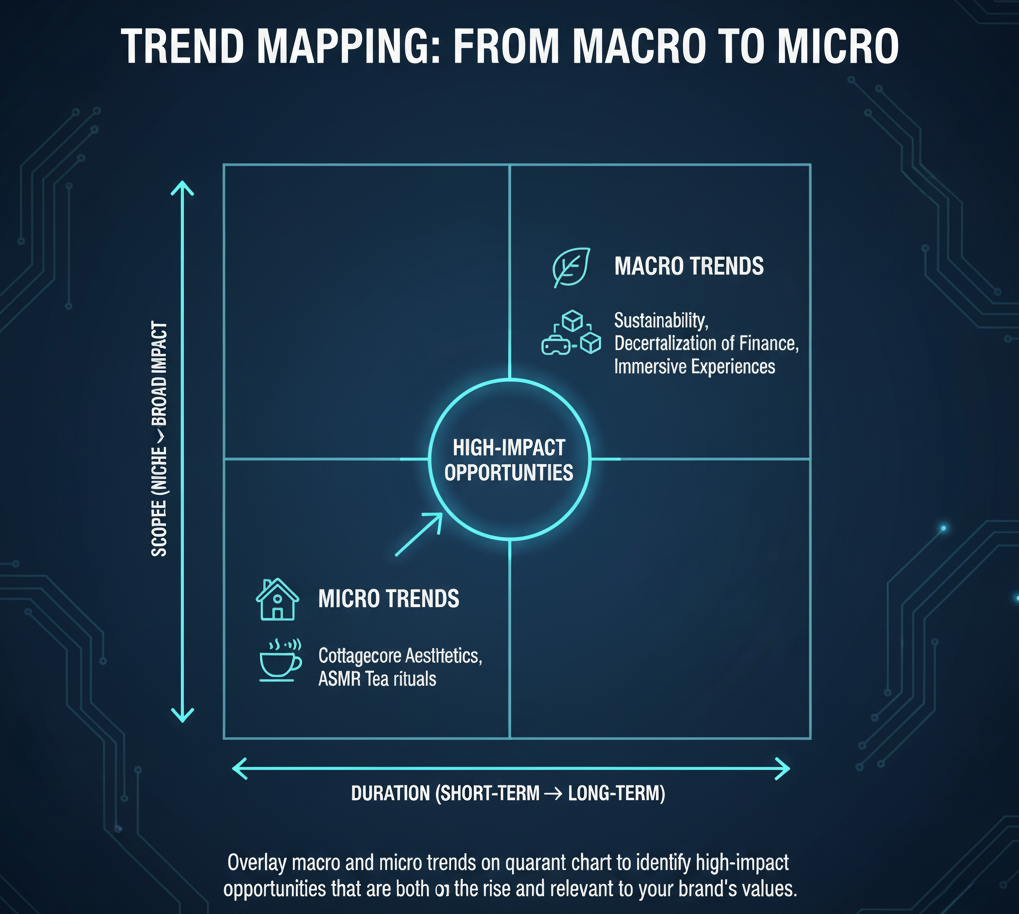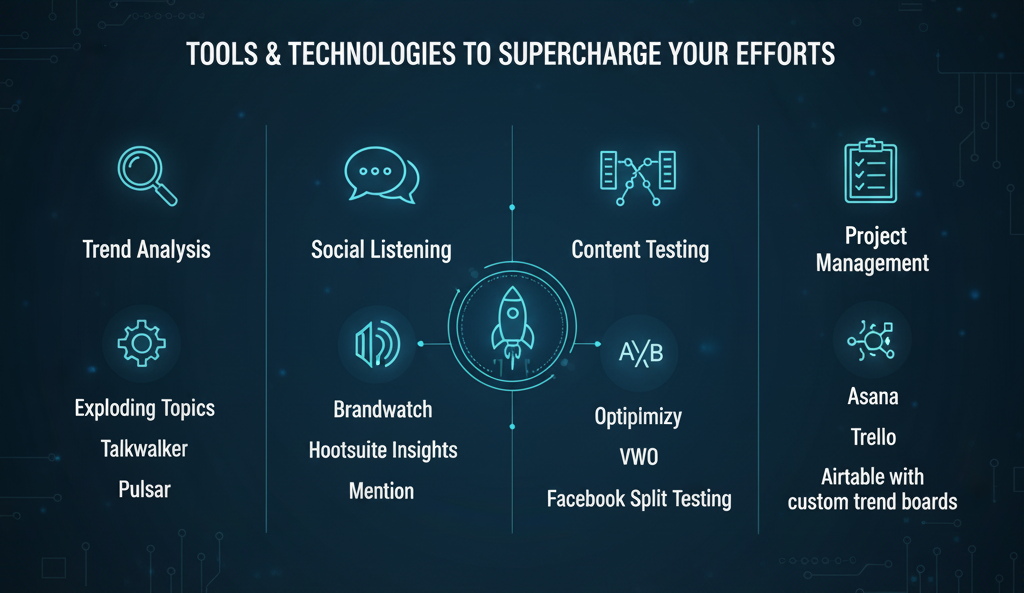
In an era where consumer behaviors shift overnight, brands that master trend marketing gain a powerful edge. Trend marketing goes beyond reacting to viral moments—it’s about anticipating shifts in consumer values, technology adoption, and cultural movements before they become mainstream. This comprehensive guide will walk you through advanced strategies for identifying, forecasting, and leveraging emerging trends and beyond.
1. Why Trend Marketing Matters
As markets saturate and attention spans shorten, traditional marketing tactics lose impact. Trend marketing offers several advantages:
- Proactive Positioning: Brands can position themselves as innovators rather than followers, capturing early adopters and media attention.
- Deeper Engagement: By aligning campaigns with authentic cultural or technological shifts, you forge stronger emotional connections.
- Optimized ROI: Investing in emerging trends early often costs less and yields higher returns compared to saturated channels.
2. Building a Robust Trend Forecasting System
Effective forecasting combines qualitative and quantitative methods. Follow this five-step framework:
- Data Collection: Aggregate data from social listening tools (e.g., Brandwatch, Sprinklr), search trends (Google Trends), and emerging platform analytics (TikTok Creative Center).
- Expert Insights: Interview industry experts and micro-influencers for anecdotal perspectives on nascent movements.
- Pattern Analysis: Use AI-driven analytics to detect spikes and co-occurrence of keywords, hashtags, and sentiment shifts across channels.
- Scenario Planning: Develop multiple future scenarios (best case, worst case, base case) to stress-test your assumptions.
- Validation and Iteration: Pilot small-scale campaigns, measure performance, and refine forecasts monthly.
3. Trend Mapping: From Macro to Micro

Not all trends are created equal. Map them across two dimensions:
- Macro Trends: Broad, long-term shifts (e.g., sustainability, decentralization of finance, immersive experiences).
- Micro Trends: Short-lived spikes driven by viral content, niche communities, or emerging subcultures (e.g., cottagecore aesthetics, ASMR tea rituals).
Overlay macro and micro trends on a quadrant chart to identify high-impact opportunities that are both on the rise and relevant to your brand’s values.
4. Crafting Trend-Driven Campaigns
Once high-potential trends are identified, design campaigns that integrate them naturally into your brand narrative. Here’s a six-step process:
- Trend Translation: Define how the trend resonates with your audience’s needs and your product’s unique promise.
- Creative Ideation: Host cross-functional brainstorming sessions to generate A- and B-level concepts, ensuring one Big Idea anchors the campaign.
- Channel Strategy: Prioritize platforms where the trend is most active—be it niches on Reddit or viral challenges on TikTok.
- Influencer Alignment: Partner with micro-influencers who embody the trend authentically, avoiding overly polished celebrity endorsements.
- Agile Execution: Launch a pilot version, gather real-time feedback, and iterate within 48–72 hours to stay relevant.
- Measurement Framework: Track both leading (engagement rate, sentiment delta) and lagging indicators (sales lift, share of voice) with unified dashboards.
5. Case Study: EcoTech’s Sustainable Gadget Launch
EcoTech, a mid-size consumer electronics company, spotted an emerging macro trend—eco-conscious tech—and a micro trend around zero-waste packaging challenges on Instagram. They:
- Hosted a user-generated “Unbox the Future” contest, encouraging followers to showcase creative ways to reuse packaging.
- Partnered with three eco-influencers to co-create limited-edition biodegradable cases, dropping teaser videos on Reels.
- Deployed sentiment-tracking bots to pivot messaging when interest spiked among Gen Z audiences.
Result: 45% increase in pre-orders and a 60% rise in Instagram mentions within two weeks—a testament to proactive trend alignment.
6. Overcoming Common Challenges
Trend marketing isn’t without pitfalls. Key challenges include:
- Data Overload: Too many signals can paralyze decision-making. Mitigate by focusing on 2–3 critical metrics per trend.
- Trend Misfires: Misreading a fad as a sustainable shift can backfire. Run micro-tests before full-scale rollouts.
- Resource Constraints: Agile trend campaigns require rapid creative and operational bandwidth. Build an internal “Trend Task Force” to streamline approvals.
- Authenticity Risk: Audiences reject inauthentic or opportunistic pivots. Stay true to your core brand values and only chase trends that align organically.
7. Tools & Technologies to Supercharge Your Efforts

Equip your team with best-in-class tools:
- Trend Analysis: Exploding Topics, Talkwalker, Pulsar.
- Social Listening: Brandwatch, Hootsuite Insights, Mention.
- Content Testing: Optimizely, VWO, Facebook Split Testing.
- Project Management: Asana, Trello, Airtable with custom trend boards.
8. Step-by-Step Implementation Roadmap
Follow this 90-day plan to institutionalize trend marketing:
- Weeks 1–3: Set up data pipelines, assemble cross-functional task force, define success metrics.
- Weeks 4–6: Conduct deep-dive trend workshops, develop 3 pilot campaign briefs.
- Weeks 7–9: Launch pilots, gather real-time feedback, refine creative on the fly.
- Weeks 10–12: Scale winning campaigns, integrate learnings into quarterly planning, and document playbooks.
9. Measuring Success & Scaling Up
Evaluate trend marketing performance across three dimensions:
- Engagement Depth: Time spent on campaign pages, repeat visits, UGC submissions.
- Brand Lift: Changes in brand awareness, purchase intent, sentiment scores.
- Revenue Impact: Incremental sales, average order value, customer lifetime value improvements.
Replicate successful trend campaigns across regions or product lines, always adapting to local nuances.
10. The Future of Trend Marketing
Looking ahead, AI and machine learning will refine trend prediction accuracy, while immersive technologies (AR/VR) create entirely new micro-trends. Brands that marry human intuition with data-driven foresight will continue to lead the pack. Prepare your organization to embrace adaptive, trend-centric workflows, and you’ll not only ride waves—you’ll create them.
Conclusion
Trend marketing is no longer optional—it’s a strategic imperative. By building a robust forecasting system, crafting authentic campaigns, and measuring with precision, your brand can stay several steps ahead in an ever-evolving landscape. Start small, iterate fast, and scale smart to make emerging consumer trends your greatest growth lever.
Ready to revolutionize your marketing strategy? Begin your trend marketing journey today and lead tomorrow’s conversations.
Learn more about: 10 Secrets of a Viral Video Campaign That Converts










Leave a Reply